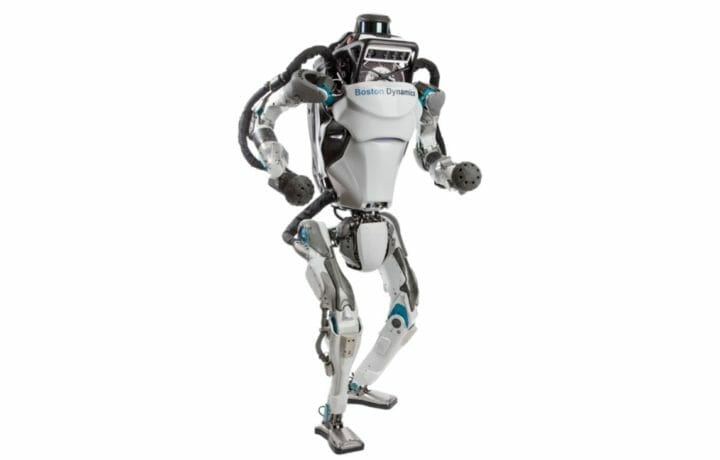Few have the moves of Olympian Simone Biles, but Boston Dynamics has developed a new humanoid robot that is capable of doing gymnastics. Atlas, which the company has dubbed “the world’s most dynamic humanoid,” was previously seen in a video jumping over logs and jogging.
Now the company, which has previously developed robotic dogs, has released a video (below) showing Atlas making even more complicated moves where it can jump over obstacles and even traverse a balance beam. The company has “trained” Atlas to maneuver its way through complex parkour courses in an effort to match the movements of a human.
Biles had to train for years to master her gold medal-winning moves, while the Boston Dynamics engineers were able to program Atlas’ routine over the course of a few months. However, it wasn’t a perfect 10 by any means, so the engineers had to quickly make some tweaks. Just as practice makes perfect for an Olympian, so too holds true for robot designers.
“If you watch the video closely, it looks a little awkward,” said Scott Kuindersma, Atlas team lead at Boston Dynamics, via a blog post. “We’re going to swap in a behavior we’ve tested before so we have some confidence it will work.”
More Dalek than Terminator
The fact that Atlas is able to move over obstacles and perform complex moves suggests its motions are becoming more human-like.
“The company clearly warrants inclusion on any list of notable self-promoters,” suggested technology analyst Charles King of Pund-IT.
“The devices they create and videos of the tasks they’re programmed for are brilliant, and also tend to inspire the kind of awe and concerns audiences had during James Cameron’s Terminator films,” King told ClearanceJobs.
However, that doesn’t necessarily mean that we have a future warfighter on our hands yet.
In fact, robotic warfighters may be far more like the evil Daleks of TV’s Doctor Who – hopefully without the xenophobia and desire to exterminate – than a terminator. In addition to not having an Austrian accent and ability to rock out in a leather jacket, a human-like robot simply isn’t what the military is likely seeking.
“There is nothing that says a robot, even one designed for combat, needs to look like a human – and instead they will be custom-built for a specific need and to accomplish a particular task,” said futurist Scott Steinberg.
“They may not need to take on a human form at all,” Steinberg told ClearanceJobs. “There may be those robots that take something close to human form for better interaction with human operators, but we’ve seen that humans can easily adapt to robots that looking nothing like a human.”
Warfighters Aren’t Gymnasts
Even if Boston Dynamics – or another company – could create a robot that can move like a human, doesn’t mean it would be ideal for the military. Atlas may look like a science-fiction robot but warfighting doesn’t come to mind.
“The complex movements of Boston Dynamics’ Atlas, however, is where the comparison begins and ends,” said King.
“Cameron’s Terminators were incredibly durable, and the baddies enjoyed creepy self-healing capabilities,” he added. “Atlas, one expects, would probably be reduced to twitching piles of slag by a few well-placed shots or artillery rounds. For battlefield skills and durability, I believe adequate armor and mobility, accurate targeting and healthy firepower capabilities will beat parkour skills for some time to some.”
Already Russia has deployed its Uran-9 in Syria for field testing. While not a true “autonomous vehicle,” it is really a miniature tank that was remote controlled. However, efforts are underway in the United States – as well as in Russia and China – to develop semi-autonomous drones that could act as “loyal wingmen” with advanced fighter aircraft.
“Robots that serve alongside our military won’t likely be bipedal, but will be designed for the task at hand,” said Steinberg.
There will likely be concern about the role the robots play in combat, of course.
“The fear and paranoia isn’t just that the robots could turn against us, but how they may lack the ethics on the battlefield,” added Steinberg. “However, we should accept that robots will find a place in the military. Just as they are being used in many industries, the military is looking at ways to employ robots to do certain jobs more efficiently and more effectively and without the risk of loss of life.”
Atlas in Action


